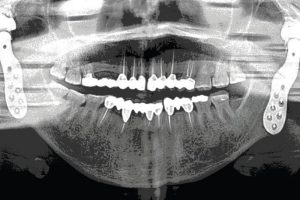Dengue is a worldwide significant tropical infection that causes up to 100 to 400 million cases of infections per year and about 25 thousand deaths and is especially prevalent in developing tropical countries in Southeast Asia. The global incidence of dengue has surged exponentially in recent years and nearly half of the world’s population is at risk of disease.
Read on to find out more about this disease.
What is dengue?
Dengue is a mosquito vector-borne viral infection caused by the arbovirus, dengue virus (DENV).
Transmission
Humans serve as the primary reservoir for dengue and mosquitoes acquire the virus when they feed on someone who has been infected and is a carrier of the virus. Dengue is not transmitted directly from one person to another, and only infected female mosquitoes can transmit DENV. Aedes aegypti is the main species of mosquitoes that is responsible for at least two-thirds of the world’s dengue infections, as well as Chikungunya and Zika viruses.
Once a mosquito is infected, it can transmit the virus for the rest of its life.
Serotypes of Dengue
There are 4 DENV serotypes (DENV-1, DENV-2, DENV-3, DENV-4) with limited cross-protection between the serotypes. Recovery from infection of one serotype can confer long lasting type-specific immunity but cross-immunity protection for other serotypes is only partial and temporary. Infection with one serotype can predispose a person to enhanced risk of severe disease when infected with a second serotype, making production of a vaccine difficult because of risks associated with subsequent secondary infections.
Clinical Features of Dengue
Dengue causes severe flu-like symptoms and acute illness ends in 8 to 10 days. There is an incubation period of 4 to 15 days after a mosquito bite, followed by a set of these symptoms:
- High fever that lasts for 4 to 7 days
- Severe headache
- Pain behind the eyes
- Body discomfort (malaise)
- Swollen glands, lymphadenopathy
- Severe prostration
- Breakbone fever – joint and muscle pain
- Positive tourniquet test where petechia is present
In serious cases of infection, vascular leakage and platelet destruction in the blood can occur. Overt bleeding (dengue haemorrhagic fever) and dengue shock syndrome are serious implications that can result in morbidity.
Infected humans can transmit the virus to mosquitoes via mosquito bites up to 2 days before symptoms start to develop and up to 2 days after the fever has ended. The virus can last in the body for up to 12 days.
Diagnosis
DENV detection includes virological tests that detect parts of the virus and serological tests that test for the body’s response to the virus.
Virological methods
Reverse transcriptase polymerase chain reaction (RT-PCR) tests are sensitive tests used to detect the presence of DENV in blood during the first few days of infection. However, developing countries that are endemic may have trouble implementing these PCR techniques due to cost issues.
To combat this, a recent rapid diagnostic test has been developed to test for non-structural on-antigen 1 (NS1), a protein that is secreted into the blood during dengue infection.
Serological tests
ELISA tests help to confirm a recent or previous infection. The presence of IgM antibodies indicates a recent infection and are detectable a week after infection up to 12 weeks. The presence of IgG antibodies, on the other hand, signify past infections and last in the body for years.
Treatment
There is no specific medication to treat dengue. Symptomatic treatment with pain relievers with acetaminophen and fever reducers can help to reduce symptoms. Non-steroidal anti-inflammatory drugs (NSAIDs) such as aspirin and ibuprofen must be avoided as these anti-inflammatory drugs can risk haemorrhage and worsen bleeding.
Fluid therapy such as oral fluid replacement is also crucial in dengue management and is catered to carefully to the severity of disease, especially in severe dengue care. Laboratory haematocrit and platelet count must be evaluated timely as a rise in haematocrit and progressive reduction of platelets can indicate haemorrhagic shock.
Management of Dengue
Introduction of Wolbachia-infected Mosquitoes to control outbreak
Wolbachia bacteria are intracellular bacteria now introduced into Aegypti populations to control dengue.
How does it work?
Wolbachia is genetically introduced into the Aedes aegypti mosquito to reduce the mosquito’s ability to transmit dengue and other viruses by modifying the sperm of mosquitoes that arrest embryonic development via a process known as cytoplasmic incompatibility.
The life of Aedes aegypti mosquitoes are shortened so that there is insufficient time for DENV to replicate. When mosquitoes with Wolbachia are released to breed with other mosquitoes from the wild population, they pass the bacteria to their offspring and subsequent generations, blocking disease transmission.
Prevention
- To prevent mosquito breeding, recently infected persons living in high endemic areas should avoid contact with family members as this increases risk of transmission.
- Personal protection measures such as repellents and insecticide are also encouraged in endemic areas.
- Disposal of stagnant water and application of insecticides to water storage containers are highly advised.
Conclusion
Dengue can be debilitating and life-threatening. Despite novel mosquito control strategies, community education and engagement is key to management.












